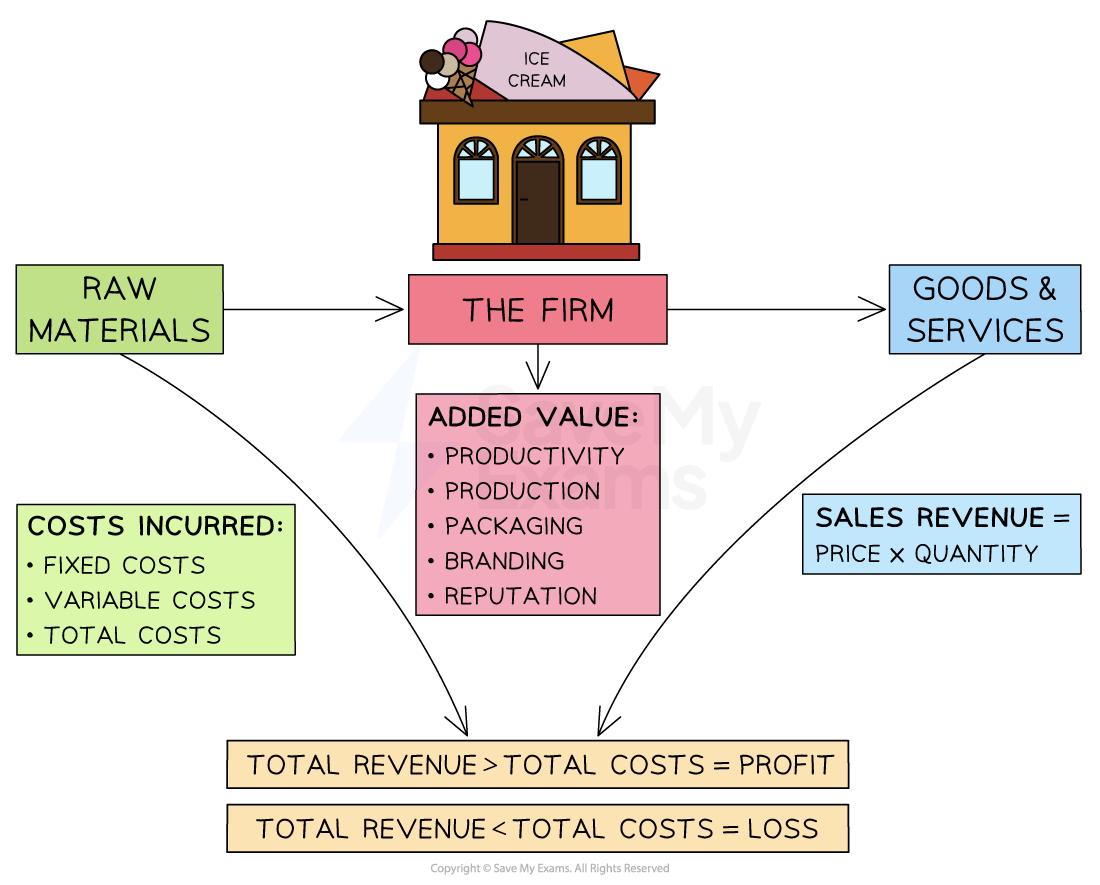Creating Goods and Services
- The purpose of business activity can be broadly defined as the organisation of human, physical and financial resources to produce goods or services that meet customer needs while adding value
Produce goods or services
The primary purpose of business activity is to produce goods or services that satisfy a need or demand in the market
- Goods are tangible physical items capable of being stored such as cars or games consoles
- Services such as insurance or hairdressing are intangible, cannot be stored and are provided to customers when they are needed
Meet customer needs
-
The ultimate goal is to create products that meet the needs and preferences of customers and provide value to them.
-
By meeting customer needs, businesses can build customer loyalty, increase brand awareness, and generate revenue.
Add Value
- The third purpose of business activity is to add value to products or services
- Value-added features can differentiate products from competitors, create a unique selling proposition, and increase customer satisfaction
- E.g. a product that is easier to use, has a better design, or is of higher quality than competitors can create a competitive advantage for a business
Business as a Transformative Process
- Businesses take inputs and transform them in order to produce outputs that customers will want to buy

-
Thailand’s Boon Rawd Brewery takes inputs including malts, hops and barley and uses the staff on the brewery premises in Bangkok as well as equipment such as mash tun to transform by brewing these inputs into its output - beer
-
Inputs used in the transformation process can be classified as financial, human or physical resources as well as enterprise
An Explanation of the Resources used to Create Goods & Services
Resource Input - Financial
To fund the production process Capital is required. Capital can be used in the following ways:
- Available cash (working capital) can be used to purchase materials and pay bills
- Finance can be used to purchase physical inputs (e.g. loans, owner’s capital)
- it provides access to trade credit to improve cash flow.
Resource Input - Human
- Employees and managers are required to carry out and oversee production
- They should be suitably trained with relevant skills, qualifications or experience
- They should be in sufficient quantity to meet output needs
Resource Input - Physical
- Materials, equipment and premises to use in production
- Enough space to produce and store inputs and outputs appropriately
- Adequate and maintained machinery and technology infrastructure
Resource Input - Enterprise
- A business idea and the desire to take the risk in turning it into a business idea
- The transformation process may require a capital intensive or a labour intensive approach
- Capital intensive production is where the proportion of machinery costs are higher than any of the other resource inputs including labour
-
The generation of nuclear power is an example of a capital intensive process where a small number of workers oversee a large facility that is largely computer-controlled
-
- Labour intensive production is where the proportion of labour costs are higher than the other resource inputs including machinery
- The production of clothing remains a largely labour-intensive process, especially in countries where labour costs are relatively low such as south-east Asia
- Capital intensive production is where the proportion of machinery costs are higher than any of the other resource inputs including labour